-
Hybrid Seeds Market, BY Crop
-
Type (USD Billion) \r\n\r\nCereals &
-
Pulses\r\nFruits & Vegetables\r\nOilseeds\r\n\r\n\r\n
-
Hybrid Seeds Market, BY Seed Treatment (USD Billion)
-
\r\n\r\nTreated\r\nUntreated\r\n\r\n\r\n
-
Hybrid Seeds Market, BY Distribution Channel (USD Billion) \r\n\r\nDirect To Farmers\r\nCooperative \r\nMediators\r\n\r\n\r\n
-
Hybrid Seeds Market, BY Regional (USD Billion) \r\n\r\nNorth America\r\n\r\nUS\r\nCanada\r\n\r\n\r\nEurope\r\n\r\nGermany\r\nUK\r\nFrance\r\nRussia\r\nItaly\r\nSpain\r\nRest
-
of Europe\r\n\r\n\r\nAPAC\r\n\r\nChina\r\nIndia\r\nJapan\r\nSouth
-
Korea\r\nMalaysia\r\nThailand\r\nIndonesia\r\nRest
-
of APAC\r\n\r\n\r\nSouth America\r\n\r\nBrazil\r\nMexico\r\nArgentina\r\nRest
-
of South America\r\n\r\n\r\nMEA\r\n\r\nGCC
-
Countries\r\nSouth Africa\r\nRest of MEA\r\n\r\n\r\n\r\n\r\n\r\n
-
\r\n
-
\r\n\r\n
-
Competitive
-
Landscape \r\n\r\nOverview\r\nCompetitive Analysis\r\nMarket share Analysis\r\nMajor
-
Growth Strategy in the Hybrid Seeds Market\r\nCompetitive
-
Benchmarking\r\nLeading Players in Terms
-
of Number of Developments in the Hybrid Seeds Market\r\nKey developments and growth strategies\r\n\r\nNew Product Launch/Service
-
Deployment\r\nMerger & Acquisitions\r\nJoint Ventures\r\n\r\n\r\nMajor Players Financial Matrix\r\n\r\nSales
-
and Operating Income\r\nMajor Players R&D Expenditure. 2023\r\n\r\n\r\n\r\n\r\n\r\n\r\n
-
Company
-
Profiles \r\n\r\nDLF\r\n\r\nFinancial
-
Overview\r\nProducts Offered\r\nKey Developments\r\nSWOT
-
Analysis\r\nKey Strategies\r\n\r\n\r\nEastWest Seed\r\n\r\nFinancial Overview\r\nProducts
-
Offered\r\nKey Developments\r\nSWOT Analysis\r\nKey Strategies\r\n\r\n\r\nSakata Seed Corporation\r\n\r\nFinancial
-
Overview\r\nProducts Offered\r\nKey Developments\r\nSWOT
-
Analysis\r\nKey Strategies\r\n\r\n\r\nBayer\r\n\r\nFinancial Overview\r\nProducts Offered\r\nKey
-
Developments\r\nSWOT Analysis\r\nKey Strategies\r\n\r\n\r\nBiocentury Transgene\r\n\r\nFinancial Overview\r\nProducts
-
Offered\r\nKey Developments\r\nSWOT Analysis\r\nKey Strategies\r\n\r\n\r\nMonsanto\r\n\r\nFinancial Overview\r\nProducts
-
Offered\r\nKey Developments\r\nSWOT Analysis\r\nKey Strategies\r\n\r\n\r\nSyngenta\r\n\r\nFinancial Overview\r\nProducts
-
Offered\r\nKey Developments\r\nSWOT Analysis\r\nKey Strategies\r\n\r\n\r\nMahindra Agribusiness\r\n\r\nFinancial Overview\r\nProducts
-
Offered\r\nKey Developments\r\nSWOT Analysis\r\nKey Strategies\r\n\r\n\r\nDow AgroSciences\r\n\r\nFinancial Overview\r\nProducts
-
Offered\r\nKey Developments\r\nSWOT Analysis\r\nKey Strategies\r\n\r\n\r\nBionema\r\n\r\nFinancial Overview\r\nProducts
-
Offered\r\nKey Developments\r\nSWOT Analysis\r\nKey Strategies\r\n\r\n\r\nFMC Corporation\r\n\r\nFinancial Overview\r\nProducts
-
Offered\r\nKey Developments\r\nSWOT Analysis\r\nKey Strategies\r\n\r\n\r\nUPL\r\n\r\nFinancial Overview\r\nProducts
-
Offered\r\nKey Developments\r\nSWOT Analysis\r\nKey Strategies\r\n\r\n\r\nLimagrain\r\n\r\nFinancial Overview\r\nProducts
-
Offered\r\nKey Developments\r\nSWOT Analysis\r\nKey Strategies\r\n\r\n\r\nCorteva\r\n\r\nFinancial Overview\r\nProducts
-
Offered\r\nKey Developments\r\nSWOT Analysis\r\nKey Strategies\r\n\r\n\r\nKWS Saat\r\n\r\nFinancial Overview\r\nProducts
-
Offered\r\nKey Developments\r\nSWOT Analysis\r\nKey Strategies\r\n\r\n\r\n\r\n\r\n\r\n\r\n
-
Appendix
-
\r\n\r\nReferences\r\nRelated Reports\r\n\r\n\r\n\r\nLIST Of tables
-
\r\n
-
\r\n\r\nLIST
-
OF ASSUMPTIONS\r\nNorth America Hybrid Seeds Market SIZE ESTIMATES &
-
FORECAST, BY CROP TYPE, 2019-2035 (USD Billions)\r\nNorth America Hybrid
-
Seeds Market SIZE ESTIMATES & FORECAST, BY SEED TREATMENT, 2019-2035 (USD Billions)\r\nNorth
-
America Hybrid Seeds Market SIZE ESTIMATES & FORECAST, BY DISTRIBUTION CHANNEL,
-
& FORECAST, BY REGIONAL, 2019-2035 (USD Billions)\r\nUS Hybrid Seeds
-
Market SIZE ESTIMATES & FORECAST, BY CROP TYPE, 2019-2035 (USD Billions)\r\nUS
-
Hybrid Seeds Market SIZE ESTIMATES & FORECAST, BY SEED TREATMENT, 2019-2035
-
(USD Billions)\r\nUS Hybrid Seeds Market SIZE ESTIMATES & FORECAST,
-
BY DISTRIBUTION CHANNEL, 2019-2035 (USD Billions)\r\nUS Hybrid Seeds Market
-
SIZE ESTIMATES & FORECAST, BY REGIONAL, 2019-2035 (USD Billions)\r\nCanada
-
Hybrid Seeds Market SIZE ESTIMATES & FORECAST, BY CROP TYPE, 2019-2035 (USD
-
Billions)\r\nCanada Hybrid Seeds Market SIZE ESTIMATES & FORECAST,
-
BY SEED TREATMENT, 2019-2035 (USD Billions)\r\nCanada Hybrid Seeds Market
-
SIZE ESTIMATES & FORECAST, BY DISTRIBUTION CHANNEL, 2019-2035 (USD Billions)\r\nCanada
-
Hybrid Seeds Market SIZE ESTIMATES & FORECAST, BY REGIONAL, 2019-2035 (USD Billions)\r\nEurope
-
Hybrid Seeds Market SIZE ESTIMATES & FORECAST, BY CROP TYPE, 2019-2035 (USD
-
Billions)\r\nEurope Hybrid Seeds Market SIZE ESTIMATES & FORECAST,
-
BY SEED TREATMENT, 2019-2035 (USD Billions)\r\nEurope Hybrid Seeds Market
-
SIZE ESTIMATES & FORECAST, BY DISTRIBUTION CHANNEL, 2019-2035 (USD Billions)\r\nEurope
-
Hybrid Seeds Market SIZE ESTIMATES & FORECAST, BY REGIONAL, 2019-2035 (USD Billions)\r\nGermany
-
Hybrid Seeds Market SIZE ESTIMATES & FORECAST, BY CROP TYPE, 2019-2035 (USD
-
Billions)\r\nGermany Hybrid Seeds Market SIZE ESTIMATES & FORECAST,
-
BY SEED TREATMENT, 2019-2035 (USD Billions)\r\nGermany Hybrid Seeds Market
-
SIZE ESTIMATES & FORECAST, BY DISTRIBUTION CHANNEL, 2019-2035 (USD Billions)\r\nGermany
-
Hybrid Seeds Market SIZE ESTIMATES & FORECAST, BY REGIONAL, 2019-2035 (USD Billions)\r\nUK
-
Hybrid Seeds Market SIZE ESTIMATES & FORECAST, BY CROP TYPE, 2019-2035 (USD
-
Billions)\r\nUK Hybrid Seeds Market SIZE ESTIMATES & FORECAST, BY SEED
-
TREATMENT, 2019-2035 (USD Billions)\r\nUK Hybrid Seeds Market SIZE ESTIMATES
-
& FORECAST, BY DISTRIBUTION CHANNEL, 2019-2035 (USD Billions)\r\nUK
-
Hybrid Seeds Market SIZE ESTIMATES & FORECAST, BY REGIONAL, 2019-2035 (USD Billions)\r\nFrance
-
Hybrid Seeds Market SIZE ESTIMATES & FORECAST, BY CROP TYPE, 2019-2035 (USD
-
Billions)\r\nFrance Hybrid Seeds Market SIZE ESTIMATES & FORECAST,
-
BY SEED TREATMENT, 2019-2035 (USD Billions)\r\nFrance Hybrid Seeds Market
-
SIZE ESTIMATES & FORECAST, BY DISTRIBUTION CHANNEL, 2019-2035 (USD Billions)\r\nFrance
-
Hybrid Seeds Market SIZE ESTIMATES & FORECAST, BY REGIONAL, 2019-2035 (USD Billions)\r\nRussia
-
Hybrid Seeds Market SIZE ESTIMATES & FORECAST, BY CROP TYPE, 2019-2035 (USD
-
Billions)\r\nRussia Hybrid Seeds Market SIZE ESTIMATES & FORECAST,
-
BY SEED TREATMENT, 2019-2035 (USD Billions)\r\nRussia Hybrid Seeds Market
-
SIZE ESTIMATES & FORECAST, BY DISTRIBUTION CHANNEL, 2019-2035 (USD Billions)\r\nRussia
-
Hybrid Seeds Market SIZE ESTIMATES & FORECAST, BY REGIONAL, 2019-2035 (USD Billions)\r\nItaly
-
Hybrid Seeds Market SIZE ESTIMATES & FORECAST, BY CROP TYPE, 2019-2035 (USD
-
Billions)\r\nItaly Hybrid Seeds Market SIZE ESTIMATES & FORECAST, BY
-
SEED TREATMENT, 2019-2035 (USD Billions)\r\nItaly Hybrid Seeds Market SIZE
-
ESTIMATES & FORECAST, BY DISTRIBUTION CHANNEL, 2019-2035 (USD Billions)\r\nItaly
-
Hybrid Seeds Market SIZE ESTIMATES & FORECAST, BY REGIONAL, 2019-2035 (USD Billions)\r\nSpain
-
Hybrid Seeds Market SIZE ESTIMATES & FORECAST, BY CROP TYPE, 2019-2035 (USD
-
Billions)\r\nSpain Hybrid Seeds Market SIZE ESTIMATES & FORECAST, BY
-
SEED TREATMENT, 2019-2035 (USD Billions)\r\nSpain Hybrid Seeds Market SIZE
-
ESTIMATES & FORECAST, BY DISTRIBUTION CHANNEL, 2019-2035 (USD Billions)\r\nSpain
-
Hybrid Seeds Market SIZE ESTIMATES & FORECAST, BY REGIONAL, 2019-2035 (USD Billions)\r\nRest
-
of Europe Hybrid Seeds Market SIZE ESTIMATES & FORECAST, BY CROP TYPE, 2019-2035
-
(USD Billions)\r\nRest of Europe Hybrid Seeds Market SIZE ESTIMATES &
-
FORECAST, BY SEED TREATMENT, 2019-2035 (USD Billions)\r\nRest of Europe
-
Hybrid Seeds Market SIZE ESTIMATES & FORECAST, BY DISTRIBUTION CHANNEL, 2019-2035
-
(USD Billions)\r\nRest of Europe Hybrid Seeds Market SIZE ESTIMATES &
-
FORECAST, BY REGIONAL, 2019-2035 (USD Billions)\r\nAPAC Hybrid Seeds Market
-
SIZE ESTIMATES & FORECAST, BY CROP TYPE, 2019-2035 (USD Billions)\r\nAPAC
-
Hybrid Seeds Market SIZE ESTIMATES & FORECAST, BY SEED TREATMENT, 2019-2035
-
(USD Billions)\r\nAPAC Hybrid Seeds Market SIZE ESTIMATES & FORECAST,
-
BY DISTRIBUTION CHANNEL, 2019-2035 (USD Billions)\r\nAPAC Hybrid Seeds
-
Market SIZE ESTIMATES & FORECAST, BY REGIONAL, 2019-2035 (USD Billions)\r\nChina
-
Hybrid Seeds Market SIZE ESTIMATES & FORECAST, BY CROP TYPE, 2019-2035 (USD
-
Billions)\r\nChina Hybrid Seeds Market SIZE ESTIMATES & FORECAST, BY
-
SEED TREATMENT, 2019-2035 (USD Billions)\r\nChina Hybrid Seeds Market SIZE
-
ESTIMATES & FORECAST, BY DISTRIBUTION CHANNEL, 2019-2035 (USD Billions)\r\nChina
-
Hybrid Seeds Market SIZE ESTIMATES & FORECAST, BY REGIONAL, 2019-2035 (USD Billions)\r\nIndia
-
Hybrid Seeds Market SIZE ESTIMATES & FORECAST, BY CROP TYPE, 2019-2035 (USD
-
Billions)\r\nIndia Hybrid Seeds Market SIZE ESTIMATES & FORECAST, BY
-
SEED TREATMENT, 2019-2035 (USD Billions)\r\nIndia Hybrid Seeds Market SIZE
-
ESTIMATES & FORECAST, BY DISTRIBUTION CHANNEL, 2019-2035 (USD Billions)\r\nIndia
-
Hybrid Seeds Market SIZE ESTIMATES & FORECAST, BY REGIONAL, 2019-2035 (USD Billions)\r\nJapan
-
Hybrid Seeds Market SIZE ESTIMATES & FORECAST, BY CROP TYPE, 2019-2035 (USD
-
Billions)\r\nJapan Hybrid Seeds Market SIZE ESTIMATES & FORECAST, BY
-
SEED TREATMENT, 2019-2035 (USD Billions)\r\nJapan Hybrid Seeds Market SIZE
-
ESTIMATES & FORECAST, BY DISTRIBUTION CHANNEL, 2019-2035 (USD Billions)\r\nJapan
-
Hybrid Seeds Market SIZE ESTIMATES & FORECAST, BY REGIONAL, 2019-2035 (USD Billions)\r\nSouth
-
Korea Hybrid Seeds Market SIZE ESTIMATES & FORECAST, BY CROP TYPE, 2019-2035
-
(USD Billions)\r\nSouth Korea Hybrid Seeds Market SIZE ESTIMATES &
-
FORECAST, BY SEED TREATMENT, 2019-2035 (USD Billions)\r\nSouth Korea Hybrid
-
Seeds Market SIZE ESTIMATES & FORECAST, BY DISTRIBUTION CHANNEL, 2019-2035 (USD
-
Billions)\r\nSouth Korea Hybrid Seeds Market SIZE ESTIMATES & FORECAST,
-
BY REGIONAL, 2019-2035 (USD Billions)\r\nMalaysia Hybrid Seeds Market SIZE
-
ESTIMATES & FORECAST, BY CROP TYPE, 2019-2035 (USD Billions)\r\nMalaysia
-
Hybrid Seeds Market SIZE ESTIMATES & FORECAST, BY SEED TREATMENT, 2019-2035
-
(USD Billions)\r\nMalaysia Hybrid Seeds Market SIZE ESTIMATES & FORECAST,
-
BY DISTRIBUTION CHANNEL, 2019-2035 (USD Billions)\r\nMalaysia Hybrid Seeds
-
Market SIZE ESTIMATES & FORECAST, BY REGIONAL, 2019-2035 (USD Billions)\r\nThailand
-
Hybrid Seeds Market SIZE ESTIMATES & FORECAST, BY CROP TYPE, 2019-2035 (USD
-
Billions)\r\nThailand Hybrid Seeds Market SIZE ESTIMATES & FORECAST,
-
BY SEED TREATMENT, 2019-2035 (USD Billions)\r\nThailand Hybrid Seeds Market
-
SIZE ESTIMATES & FORECAST, BY DISTRIBUTION CHANNEL, 2019-2035 (USD Billions)\r\nThailand
-
Hybrid Seeds Market SIZE ESTIMATES & FORECAST, BY REGIONAL, 2019-2035 (USD Billions)\r\nIndonesia
-
Hybrid Seeds Market SIZE ESTIMATES & FORECAST, BY CROP TYPE, 2019-2035 (USD
-
Billions)\r\nIndonesia Hybrid Seeds Market SIZE ESTIMATES & FORECAST,
-
BY SEED TREATMENT, 2019-2035 (USD Billions)\r\nIndonesia Hybrid Seeds Market
-
SIZE ESTIMATES & FORECAST, BY DISTRIBUTION CHANNEL, 2019-2035 (USD Billions)\r\nIndonesia
-
Hybrid Seeds Market SIZE ESTIMATES & FORECAST, BY REGIONAL, 2019-2035 (USD Billions)\r\nRest
-
of APAC Hybrid Seeds Market SIZE ESTIMATES & FORECAST, BY CROP TYPE, 2019-2035
-
(USD Billions)\r\nRest of APAC Hybrid Seeds Market SIZE ESTIMATES &
-
FORECAST, BY SEED TREATMENT, 2019-2035 (USD Billions)\r\nRest of APAC Hybrid
-
Seeds Market SIZE ESTIMATES & FORECAST, BY DISTRIBUTION CHANNEL, 2019-2035 (USD
-
Billions)\r\nRest of APAC Hybrid Seeds Market SIZE ESTIMATES & FORECAST,
-
BY REGIONAL, 2019-2035 (USD Billions)\r\nSouth America Hybrid Seeds Market
-
SIZE ESTIMATES & FORECAST, BY CROP TYPE, 2019-2035 (USD Billions)\r\nSouth
-
America Hybrid Seeds Market SIZE ESTIMATES & FORECAST, BY SEED TREATMENT, 2019-2035
-
(USD Billions)\r\nSouth America Hybrid Seeds Market SIZE ESTIMATES &
-
FORECAST, BY DISTRIBUTION CHANNEL, 2019-2035 (USD Billions)\r\nSouth America
-
Hybrid Seeds Market SIZE ESTIMATES & FORECAST, BY REGIONAL, 2019-2035 (USD Billions)\r\nBrazil
-
Hybrid Seeds Market SIZE ESTIMATES & FORECAST, BY CROP TYPE, 2019-2035 (USD
-
Billions)\r\nBrazil Hybrid Seeds Market SIZE ESTIMATES & FORECAST,
-
BY SEED TREATMENT, 2019-2035 (USD Billions)\r\nBrazil Hybrid Seeds Market
-
SIZE ESTIMATES & FORECAST, BY DISTRIBUTION CHANNEL, 2019-2035 (USD Billions)\r\nBrazil
-
Hybrid Seeds Market SIZE ESTIMATES & FORECAST, BY REGIONAL, 2019-2035 (USD Billions)\r\nMexico
-
Hybrid Seeds Market SIZE ESTIMATES & FORECAST, BY CROP TYPE, 2019-2035 (USD
-
Billions)\r\nMexico Hybrid Seeds Market SIZE ESTIMATES & FORECAST,
-
BY SEED TREATMENT, 2019-2035 (USD Billions)\r\nMexico Hybrid Seeds Market
-
SIZE ESTIMATES & FORECAST, BY DISTRIBUTION CHANNEL, 2019-2035 (USD Billions)\r\nMexico
-
Hybrid Seeds Market SIZE ESTIMATES & FORECAST, BY REGIONAL, 2019-2035 (USD Billions)\r\nArgentina
-
Hybrid Seeds Market SIZE ESTIMATES & FORECAST, BY CROP TYPE, 2019-2035 (USD
-
Billions)\r\nArgentina Hybrid Seeds Market SIZE ESTIMATES & FORECAST,
-
BY SEED TREATMENT, 2019-2035 (USD Billions)\r\nArgentina Hybrid Seeds Market
-
SIZE ESTIMATES & FORECAST, BY DISTRIBUTION CHANNEL, 2019-2035 (USD Billions)\r\nArgentina
-
Hybrid Seeds Market SIZE ESTIMATES & FORECAST, BY REGIONAL, 2019-2035 (USD Billions)\r\nRest
-
of South America Hybrid Seeds Market SIZE ESTIMATES & FORECAST, BY CROP TYPE,
-
ESTIMATES & FORECAST, BY SEED TREATMENT, 2019-2035 (USD Billions)\r\nRest
-
of South America Hybrid Seeds Market SIZE ESTIMATES & FORECAST, BY DISTRIBUTION
-
CHANNEL, 2019-2035 (USD Billions)\r\nRest of South America Hybrid Seeds
-
Market SIZE ESTIMATES & FORECAST, BY REGIONAL, 2019-2035 (USD Billions)\r\nMEA
-
Hybrid Seeds Market SIZE ESTIMATES & FORECAST, BY CROP TYPE, 2019-2035 (USD
-
Billions)\r\nMEA Hybrid Seeds Market SIZE ESTIMATES & FORECAST, BY
-
SEED TREATMENT, 2019-2035 (USD Billions)\r\nMEA Hybrid Seeds Market SIZE
-
ESTIMATES & FORECAST, BY DISTRIBUTION CHANNEL, 2019-2035 (USD Billions)\r\nMEA
-
Hybrid Seeds Market SIZE ESTIMATES & FORECAST, BY REGIONAL, 2019-2035 (USD Billions)\r\nGCC
-
Countries Hybrid Seeds Market SIZE ESTIMATES & FORECAST, BY CROP TYPE, 2019-2035
-
(USD Billions)\r\nGCC Countries Hybrid Seeds Market SIZE ESTIMATES &
-
FORECAST, BY SEED TREATMENT, 2019-2035 (USD Billions)\r\nGCC Countries
-
Hybrid Seeds Market SIZE ESTIMATES & FORECAST, BY DISTRIBUTION CHANNEL, 2019-2035
-
(USD Billions)\r\nGCC Countries Hybrid Seeds Market SIZE ESTIMATES &
-
FORECAST, BY REGIONAL, 2019-2035 (USD Billions)\r\nSouth Africa Hybrid
-
Seeds Market SIZE ESTIMATES & FORECAST, BY CROP TYPE, 2019-2035 (USD Billions)\r\nSouth
-
Africa Hybrid Seeds Market SIZE ESTIMATES & FORECAST, BY SEED TREATMENT, 2019-2035
-
(USD Billions)\r\nSouth Africa Hybrid Seeds Market SIZE ESTIMATES &
-
FORECAST, BY DISTRIBUTION CHANNEL, 2019-2035 (USD Billions)\r\nSouth Africa
-
Hybrid Seeds Market SIZE ESTIMATES & FORECAST, BY REGIONAL, 2019-2035 (USD Billions)\r\nRest
-
of MEA Hybrid Seeds Market SIZE ESTIMATES & FORECAST, BY CROP TYPE, 2019-2035
-
(USD Billions)\r\nRest of MEA Hybrid Seeds Market SIZE ESTIMATES &
-
FORECAST, BY SEED TREATMENT, 2019-2035 (USD Billions)\r\nRest of MEA Hybrid
-
Seeds Market SIZE ESTIMATES & FORECAST, BY DISTRIBUTION CHANNEL, 2019-2035 (USD
-
Billions)\r\nRest of MEA Hybrid Seeds Market SIZE ESTIMATES & FORECAST,
-
BY REGIONAL, 2019-2035 (USD Billions)\r\nPRODUCT LAUNCH/PRODUCT DEVELOPMENT/APPROVAL\r\nACQUISITION/PARTNERSHIP\r\n\r\n
-
\r\n
-
\r\n
-
\r\n
-
\r\n
-
\r\n
-
\r\n
-
\r\n
-
\r\n
-
\r\n
-
\r\n
-
\r\n
-
\r\n
-
\r\n
-
\r\n
-
\r\n
-
\r\n
-
\r\n
-
\r\n
-
\r\n
-
\r\n
-
\r\n
-
\r\n
-
\r\n
-
\r\n
-
\r\n
-
\r\n
-
\r\n
-
\r\n
-
\r\nLIST Of figures
-
\r\n
-
\r\n\r\nMARKET SYNOPSIS\r\nNORTH AMERICA HYBRID SEEDS MARKET ANALYSIS\r\nUS HYBRID SEEDS MARKET ANALYSIS BY CROP TYPE\r\nUS HYBRID SEEDS MARKET ANALYSIS BY SEED TREATMENT\r\nUS HYBRID SEEDS MARKET ANALYSIS BY DISTRIBUTION CHANNEL\r\nUS HYBRID SEEDS MARKET ANALYSIS BY REGIONAL\r\nCANADA HYBRID SEEDS MARKET ANALYSIS BY CROP TYPE\r\nCANADA HYBRID SEEDS MARKET ANALYSIS BY SEED TREATMENT\r\nCANADA HYBRID SEEDS MARKET ANALYSIS BY DISTRIBUTION CHANNEL\r\nCANADA HYBRID SEEDS MARKET ANALYSIS BY REGIONAL\r\nEUROPE HYBRID SEEDS MARKET ANALYSIS\r\nGERMANY HYBRID SEEDS MARKET ANALYSIS BY CROP TYPE\r\nGERMANY HYBRID SEEDS MARKET ANALYSIS BY SEED TREATMENT\r\nGERMANY HYBRID SEEDS MARKET ANALYSIS BY DISTRIBUTION CHANNEL\r\nGERMANY HYBRID SEEDS MARKET ANALYSIS BY REGIONAL\r\nUK HYBRID SEEDS MARKET ANALYSIS BY CROP TYPE\r\nUK HYBRID SEEDS MARKET ANALYSIS BY SEED TREATMENT\r\nUK HYBRID SEEDS MARKET ANALYSIS BY DISTRIBUTION CHANNEL\r\nUK HYBRID SEEDS MARKET ANALYSIS BY REGIONAL\r\nFRANCE HYBRID SEEDS MARKET ANALYSIS BY CROP TYPE\r\nFRANCE HYBRID SEEDS MARKET ANALYSIS BY SEED TREATMENT\r\nFRANCE HYBRID SEEDS MARKET ANALYSIS BY DISTRIBUTION
-
CHANNEL\r\nFRANCE HYBRID SEEDS MARKET ANALYSIS
-
BY REGIONAL\r\nRUSSIA HYBRID SEEDS MARKET
-
ANALYSIS BY CROP TYPE\r\nRUSSIA HYBRID SEEDS
-
MARKET ANALYSIS BY SEED TREATMENT\r\nRUSSIA
-
HYBRID SEEDS MARKET ANALYSIS BY DISTRIBUTION CHANNEL\r\nRUSSIA HYBRID SEEDS MARKET ANALYSIS BY REGIONAL\r\nITALY HYBRID SEEDS MARKET ANALYSIS BY CROP TYPE\r\nITALY HYBRID SEEDS MARKET ANALYSIS BY SEED TREATMENT\r\nITALY HYBRID SEEDS MARKET ANALYSIS BY DISTRIBUTION CHANNEL\r\nITALY HYBRID SEEDS MARKET ANALYSIS BY REGIONAL\r\nSPAIN HYBRID SEEDS MARKET ANALYSIS BY CROP TYPE\r\nSPAIN HYBRID SEEDS MARKET ANALYSIS BY SEED TREATMENT\r\nSPAIN HYBRID SEEDS MARKET ANALYSIS BY DISTRIBUTION
-
CHANNEL\r\nSPAIN HYBRID SEEDS MARKET ANALYSIS
-
BY REGIONAL\r\nREST OF EUROPE HYBRID SEEDS
-
MARKET ANALYSIS BY CROP TYPE\r\nREST OF
-
EUROPE HYBRID SEEDS MARKET ANALYSIS BY SEED TREATMENT\r\nREST OF EUROPE HYBRID SEEDS MARKET ANALYSIS BY DISTRIBUTION CHANNEL\r\nREST OF EUROPE HYBRID SEEDS MARKET ANALYSIS BY REGIONAL\r\nAPAC HYBRID SEEDS MARKET ANALYSIS\r\nCHINA HYBRID SEEDS MARKET ANALYSIS BY CROP TYPE\r\nCHINA HYBRID SEEDS MARKET ANALYSIS BY SEED TREATMENT\r\nCHINA HYBRID SEEDS MARKET ANALYSIS BY DISTRIBUTION CHANNEL\r\nCHINA HYBRID SEEDS MARKET ANALYSIS BY REGIONAL\r\nINDIA HYBRID SEEDS MARKET ANALYSIS BY CROP TYPE\r\nINDIA HYBRID SEEDS MARKET ANALYSIS BY SEED TREATMENT\r\nINDIA HYBRID SEEDS MARKET ANALYSIS BY DISTRIBUTION
-
CHANNEL\r\nINDIA HYBRID SEEDS MARKET ANALYSIS
-
BY REGIONAL\r\nJAPAN HYBRID SEEDS MARKET
-
ANALYSIS BY CROP TYPE\r\nJAPAN HYBRID SEEDS
-
MARKET ANALYSIS BY SEED TREATMENT\r\nJAPAN
-
HYBRID SEEDS MARKET ANALYSIS BY DISTRIBUTION CHANNEL\r\nJAPAN HYBRID SEEDS MARKET ANALYSIS BY REGIONAL\r\nSOUTH KOREA HYBRID SEEDS MARKET ANALYSIS BY CROP TYPE\r\nSOUTH KOREA HYBRID SEEDS MARKET ANALYSIS BY SEED TREATMENT\r\nSOUTH KOREA HYBRID SEEDS MARKET ANALYSIS BY DISTRIBUTION
-
CHANNEL\r\nSOUTH KOREA HYBRID SEEDS MARKET
-
ANALYSIS BY REGIONAL\r\nMALAYSIA HYBRID
-
SEEDS MARKET ANALYSIS BY CROP TYPE\r\nMALAYSIA
-
HYBRID SEEDS MARKET ANALYSIS BY SEED TREATMENT\r\nMALAYSIA HYBRID SEEDS MARKET ANALYSIS BY DISTRIBUTION CHANNEL\r\nMALAYSIA HYBRID SEEDS MARKET ANALYSIS BY REGIONAL\r\nTHAILAND HYBRID SEEDS MARKET ANALYSIS BY CROP TYPE\r\nTHAILAND HYBRID SEEDS MARKET ANALYSIS BY SEED TREATMENT\r\nTHAILAND HYBRID SEEDS MARKET ANALYSIS BY DISTRIBUTION
-
CHANNEL\r\nTHAILAND HYBRID SEEDS MARKET
-
ANALYSIS BY REGIONAL\r\nINDONESIA HYBRID
-
SEEDS MARKET ANALYSIS BY CROP TYPE\r\nINDONESIA
-
HYBRID SEEDS MARKET ANALYSIS BY SEED TREATMENT\r\nINDONESIA HYBRID SEEDS MARKET ANALYSIS BY DISTRIBUTION CHANNEL\r\nINDONESIA HYBRID SEEDS MARKET ANALYSIS BY REGIONAL\r\nREST OF APAC HYBRID SEEDS MARKET ANALYSIS BY CROP
-
TYPE\r\nREST OF APAC HYBRID SEEDS MARKET
-
ANALYSIS BY SEED TREATMENT\r\nREST OF APAC
-
HYBRID SEEDS MARKET ANALYSIS BY DISTRIBUTION CHANNEL\r\nREST OF APAC HYBRID SEEDS MARKET ANALYSIS BY REGIONAL\r\nSOUTH AMERICA HYBRID SEEDS MARKET ANALYSIS\r\nBRAZIL HYBRID SEEDS MARKET ANALYSIS BY CROP TYPE\r\nBRAZIL HYBRID SEEDS MARKET ANALYSIS BY SEED TREATMENT\r\nBRAZIL HYBRID SEEDS MARKET ANALYSIS BY DISTRIBUTION CHANNEL\r\nBRAZIL HYBRID SEEDS MARKET ANALYSIS BY REGIONAL\r\nMEXICO HYBRID SEEDS MARKET ANALYSIS BY CROP TYPE\r\nMEXICO HYBRID SEEDS MARKET ANALYSIS BY SEED TREATMENT\r\nMEXICO HYBRID SEEDS MARKET ANALYSIS BY DISTRIBUTION
-
CHANNEL\r\nMEXICO HYBRID SEEDS MARKET ANALYSIS
-
BY REGIONAL\r\nARGENTINA HYBRID SEEDS MARKET
-
ANALYSIS BY CROP TYPE\r\nARGENTINA HYBRID
-
SEEDS MARKET ANALYSIS BY SEED TREATMENT\r\nARGENTINA
-
HYBRID SEEDS MARKET ANALYSIS BY DISTRIBUTION CHANNEL\r\nARGENTINA HYBRID SEEDS MARKET ANALYSIS BY REGIONAL\r\nREST OF SOUTH AMERICA HYBRID SEEDS MARKET ANALYSIS BY CROP TYPE\r\nREST OF SOUTH AMERICA HYBRID SEEDS MARKET ANALYSIS
-
BY SEED TREATMENT\r\nREST OF SOUTH AMERICA
-
HYBRID SEEDS MARKET ANALYSIS BY DISTRIBUTION CHANNEL\r\nREST OF SOUTH AMERICA HYBRID SEEDS MARKET ANALYSIS BY REGIONAL\r\nMEA HYBRID SEEDS MARKET ANALYSIS\r\nGCC COUNTRIES HYBRID SEEDS MARKET ANALYSIS BY CROP TYPE\r\nGCC COUNTRIES HYBRID SEEDS MARKET ANALYSIS BY SEED TREATMENT\r\nGCC COUNTRIES HYBRID SEEDS MARKET ANALYSIS BY DISTRIBUTION
-
CHANNEL\r\nGCC COUNTRIES HYBRID SEEDS MARKET
-
ANALYSIS BY REGIONAL\r\nSOUTH AFRICA HYBRID
-
SEEDS MARKET ANALYSIS BY CROP TYPE\r\nSOUTH
-
AFRICA HYBRID SEEDS MARKET ANALYSIS BY SEED TREATMENT\r\nSOUTH AFRICA HYBRID SEEDS MARKET ANALYSIS BY DISTRIBUTION CHANNEL\r\nSOUTH AFRICA HYBRID SEEDS MARKET ANALYSIS BY REGIONAL\r\nREST OF MEA HYBRID SEEDS MARKET ANALYSIS BY CROP
-
TYPE\r\nREST OF MEA HYBRID SEEDS MARKET
-
ANALYSIS BY SEED TREATMENT\r\nREST OF MEA
-
HYBRID SEEDS MARKET ANALYSIS BY DISTRIBUTION CHANNEL\r\nREST OF MEA HYBRID SEEDS MARKET ANALYSIS BY REGIONAL\r\nKEY BUYING CRITERIA OF HYBRID SEEDS MARKET\r\nRESEARCH PROCESS OF MRFR\r\nDRO
-
ANALYSIS OF HYBRID SEEDS MARKET\r\nDRIVERS
-
IMPACT ANALYSIS: HYBRID SEEDS MARKET\r\nRESTRAINTS
-
IMPACT ANALYSIS: HYBRID SEEDS MARKET\r\nSUPPLY
-
/ VALUE CHAIN: HYBRID SEEDS MARKET\r\nHYBRID
-
SEEDS MARKET, BY CROP TYPE, 2025 (% SHARE)\r\nHYBRID
-
SEEDS MARKET, BY CROP TYPE, 2019 TO 2035 (USD Billions)\r\nHYBRID SEEDS MARKET, BY SEED TREATMENT, 2025 (% SHARE)\r\nHYBRID SEEDS MARKET, BY SEED TREATMENT, 2019 TO 2035 (USD Billions)\r\nHYBRID SEEDS MARKET, BY DISTRIBUTION CHANNEL, 2025
-
(% SHARE)\r\nHYBRID SEEDS MARKET, BY DISTRIBUTION
-
CHANNEL, 2019 TO 2035 (USD Billions)\r\nHYBRID
-
SEEDS MARKET, BY REGIONAL, 2025 (% SHARE)\r\nHYBRID
-
SEEDS MARKET, BY REGIONAL, 2019 TO 2035 (USD Billions)\r\nBENCHMARKING OF MAJOR COMPETITORS\r\n\r\n
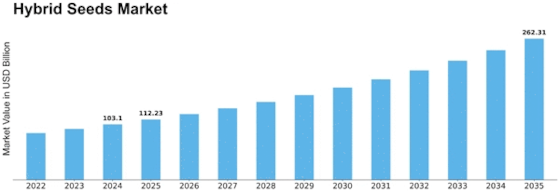


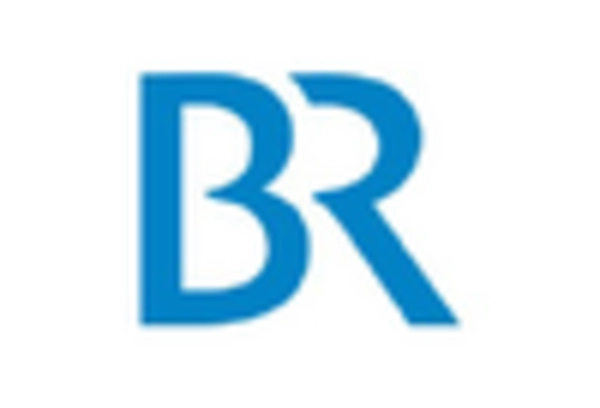
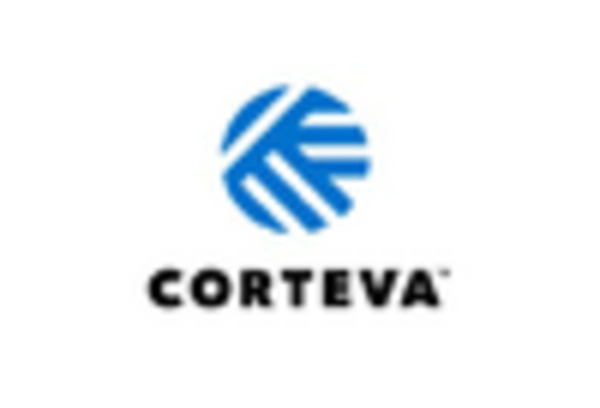
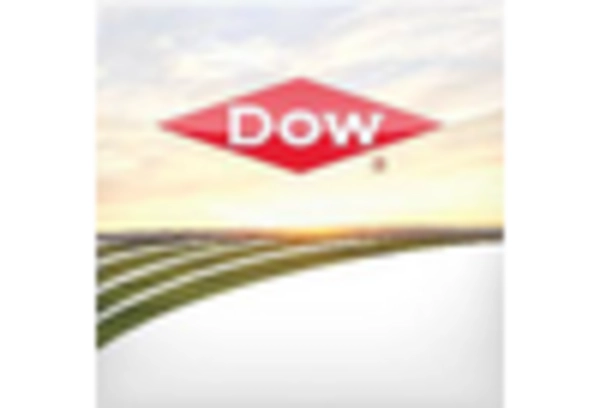
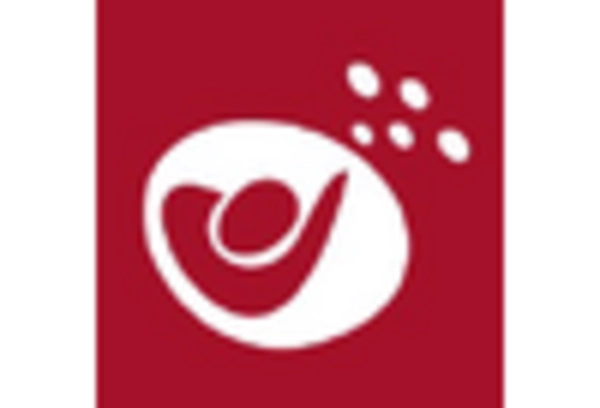
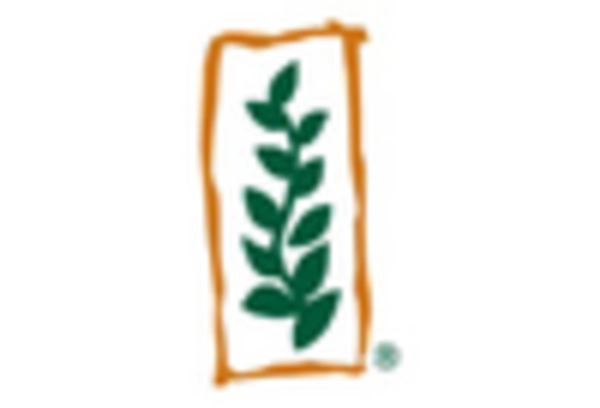
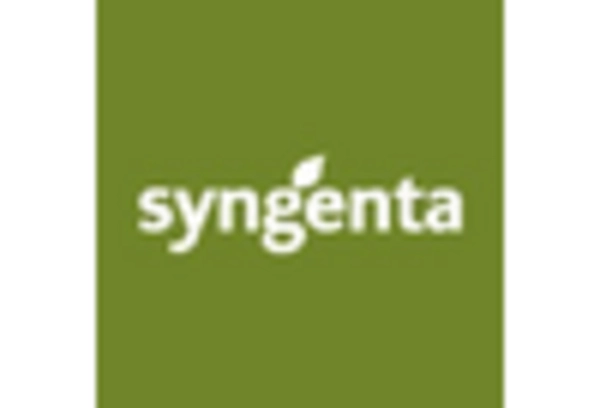

Leave a Comment